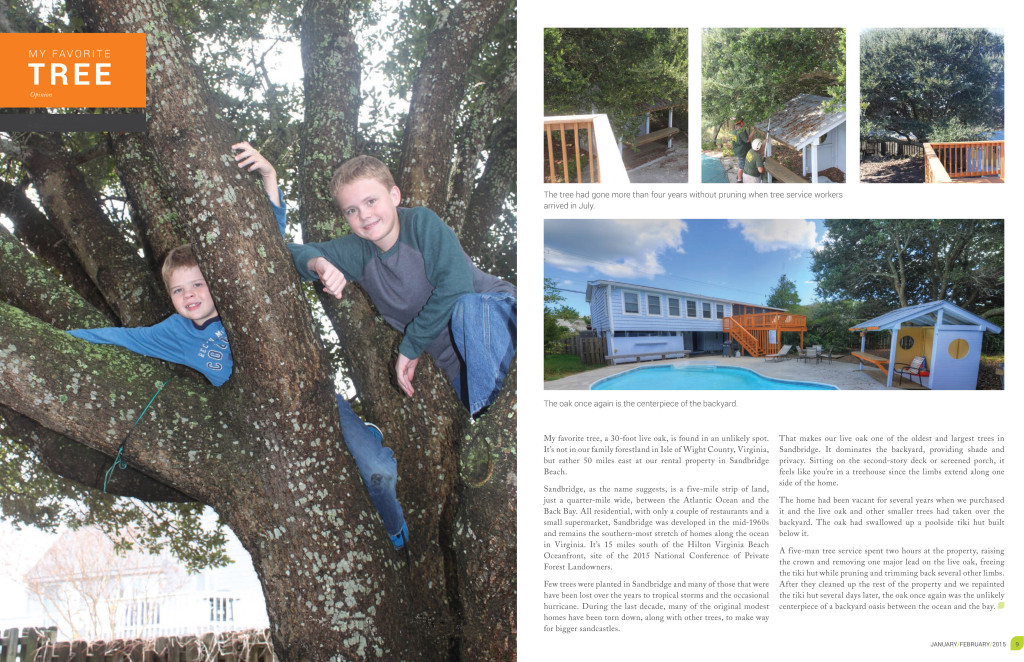SBH Real Estate client, Pete Williams, recently wrote an opinion article in the magazine Forest Landowner and shared it with us. We have included the article below.
My favorite tree, a 30-foot live oak, is found in an unlikely spot. Its not in our family forestland in Isle of Wight County, Virginia, but rather 50 miles east at our rental property in Sandbridge Beach.
Sandbridge, as the name suggests, is a five-mile strip of land, just a quarter-mile wide, between the Atlantic Ocean and the Back Bay. All residential, with only a couple of restaurants and a small supermarket, Sandbridge was developed in the mid-1960s and remains the southern-most stretch of homes along the ocean in Virginia. It’s 15 miles south of the Hilton Virginia Beach Oceanfront, site of the 2015 National Conference of Private Forest Landowners.
Few trees were planted in Sandbridge and many of those that were have been lost over the years to tropical storms and the occasional hurricane. During the last decade, many of the original modest homes have been torn down, along with other trees, to make way for bigger sandcastles.
That makes our live oak one of the oldest and largest trees in Sandbridge. It dominates the backyard, providing shade and privacy. Sitting on the second-story deck or screened porch, it feels like you’re in a tree house since the limbs extend along one side of home.
The home had been vacant for several years when we purchased it and the live oak and other smaller trees had taken over the backyard. The oak had swallowed up a poolside tiki hut built below it.
A five-man tree service spent two hours at the property, raising the crown and removing one major lead on the live oak, freeing the tiki hut while pruning and trimming back several other limbs. After they cleaned up the rest of the property and we repainted the tiki hut several days later, the oak once again was the unlikely centerpiece of a backyard oasis between the ocean and the bay.

